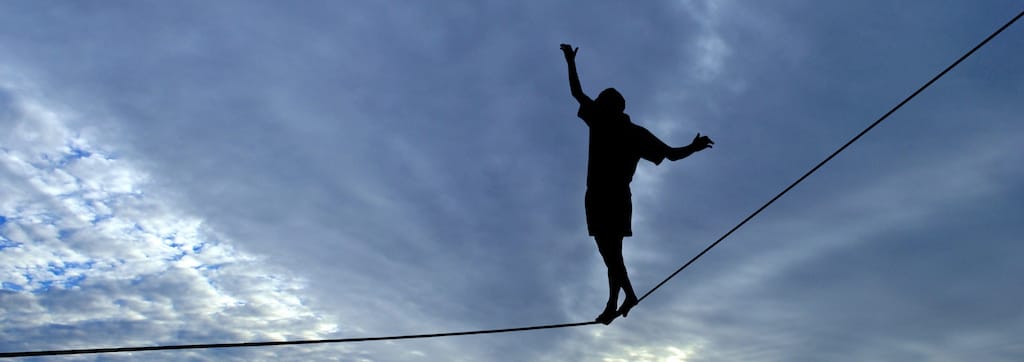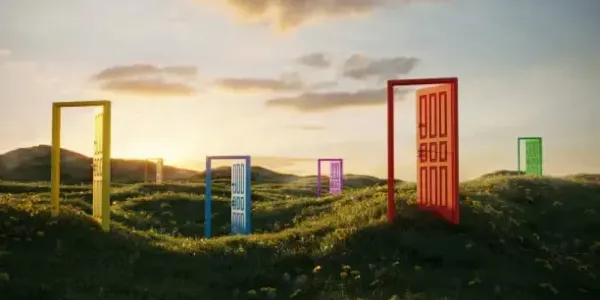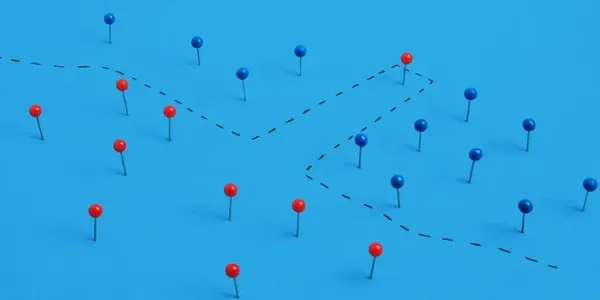Proximity to precarity
Inequality is making society less creative and makes embracing an abundance mindset (much less an abundance agenda) more difficult.

precarity (n): a state of persistent insecurity, often with regard to employment or income.
Much has been made over the last few years — especially during the lockdown era of COVID and the last two years of inflation — about the huge percentage of Americans who cannot afford a $400 crisis — often as a means to contextualize our expanding income inequality or to build support for a broader social safety net. And the consistent use of the $400 statistic has created a backlash amongst others who question its validity or suggest that most of those Americans have access to various forms of debt in addition to community supports. Regardless of what this statistic really means about how risky the U.S. economy is in raw terms, it unquestionably illuminates a stark reality that risk, fragility, and precarity are experienced unevenly as an often-difficult to see dimension of privilege.
Traditionally this economic precarity is shouldered disproportionately by the working poor and predominantly blue collar workers constrained by the ways hourly wages have failed to keep up with inflation much less the galloping inequality driven by a small, exponential economy that few have substantive access to. But in the wake of the new sector consequences and white-collar disruptions that the rapid deployment of AI tools are bringing into near-term view, we are about to see precarity shared more broadly and by communities that have traditionally not lived with this kind of persistent pressure.
The constant stress and strain of living without a safety net — one health expense, one car engine going out — forces most people to live a life precariously close to that edge. And the constant proximity of precarity changes the way people think about themselves, about others (threat versus source), and about the future. And our precarity is much more than economic – we feel alone and lonely and disconnected from the communities that provide the mutual aid and confidence and cultural belonging that help us feel resilient and give us access to the breath of experience and ideas that enable us to be creative in the face of uncertainty rather than reach for comfort.
Engaging with the world as a source of creativity and opportunity, of seeing the world as for you and not as a constant source of potential threats requires both psychological and physical safety. When either are compromised or perceived to be compromised, our thinking changes, our biological chemistry changes. And in this heightened, semi-permanent state of “on edges-ness” we are likely to embrace a threat orientation to the world (or deepen one we already hold) and the horizon of our decision making shortens dramatically. “I can't give a fuck about climate change in 50 years — I may not be able to pay my mortgage on Friday or feed my family next week.” And the more and more threat oriented we become, the easier it is to see other people as threats or to be persuaded that other groups are threats. Add to this dynamic the lingering aftereffects of a pandemic where other people were actually dangerous. And a decade of algorithmic social segregation and sorting homogenizing our experiences of culture and opinion, and it’s no wonder we have a hard time thinking creatively about the future — or seeing possible futures that aren’t dystopian — or if not dystopian, at least dominated by new hierarchies, persistent unfairness, possible pitfalls, and new risks rather than moments of opportunity and possibility.
A generative society is an ethical future that demands that we reengage with our notion of what we get to do for each other (rather than what we owe each other) and that we are able to grasp for heterogeneity and heterarchy as sources of creativity and innovation in society, not as threat. The work of reweaving our social fabric and of redistributing privilege and ensuring that an abundance mindset isn't a casualty of systemic and systematic inequities and inequalities through civic experiences that safely increase the heterogeneity of our experiences and networks, that gently expand our circle of care as opportunity not obligation is a step in this direction. More broadly and diversely experienced precarity is not a good thing for anyone, but it does invite more more different people to see shared experience in unexpected allies. And a broader community of unexpected allies might could point us in the direction of new and more creative collective action that elevates new coalitions and finds new paths to address the underlying cultural and economic assumptions and the policies they validate that drive inequality in America.
Being more sensitive to who in our communities lives with precarity and who in our nation and economy bears the burden of precarity — and who does not — is another essential component to finding ways — via culture or policy — to relieve the stresses that keep more of us from being more capable more often of engaging with our future — near and far — as full of the possibilities of community and thriving.
Last updated: 05 Jun 2025




